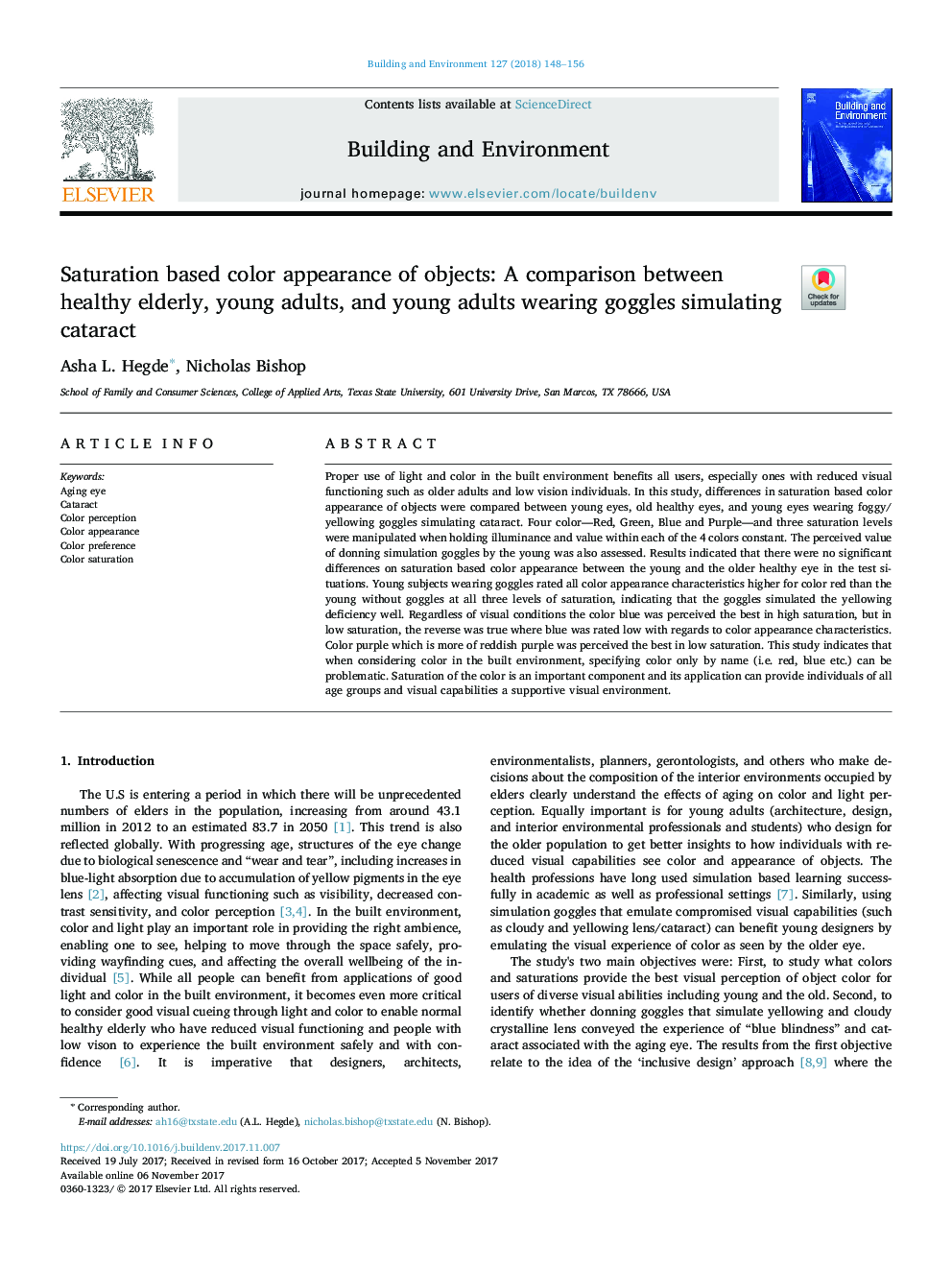| Article ID | Journal | Published Year | Pages | File Type |
|---|---|---|---|---|
| 6698482 | Building and Environment | 2018 | 9 Pages |
Abstract
Proper use of light and color in the built environment benefits all users, especially ones with reduced visual functioning such as older adults and low vision individuals. In this study, differences in saturation based color appearance of objects were compared between young eyes, old healthy eyes, and young eyes wearing foggy/yellowing goggles simulating cataract. Four color-Red, Green, Blue and Purple-and three saturation levels were manipulated when holding illuminance and value within each of the 4 colors constant. The perceived value of donning simulation goggles by the young was also assessed. Results indicated that there were no significant differences on saturation based color appearance between the young and the older healthy eye in the test situations. Young subjects wearing goggles rated all color appearance characteristics higher for color red than the young without goggles at all three levels of saturation, indicating that the goggles simulated the yellowing deficiency well. Regardless of visual conditions the color blue was perceived the best in high saturation, but in low saturation, the reverse was true where blue was rated low with regards to color appearance characteristics. Color purple which is more of reddish purple was perceived the best in low saturation. This study indicates that when considering color in the built environment, specifying color only by name (i.e. red, blue etc.) can be problematic. Saturation of the color is an important component and its application can provide individuals of all age groups and visual capabilities a supportive visual environment.
Related Topics
Physical Sciences and Engineering
Energy
Renewable Energy, Sustainability and the Environment
Authors
Asha L. Hegde, Nicholas Bishop,
